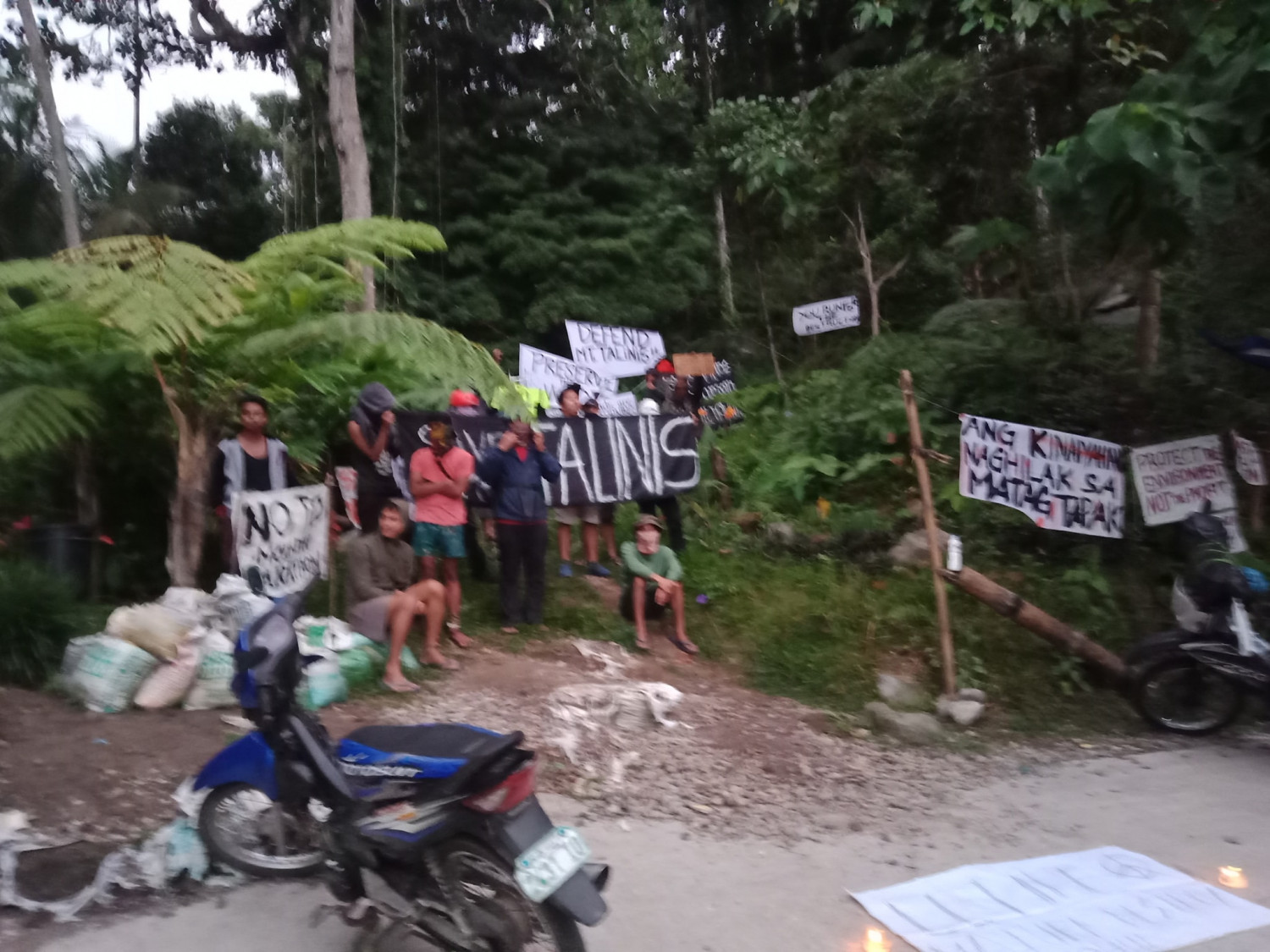
by DGR News Service | Nov 15, 2019 | Human Supremacy, Obstruction & Occupation
Editors note: this piece comes from allies in the Arkipelago (decolonized term for the Philippines) who are engaged in ecological struggles and wish to highlight the detrimental effects of mass culture in outdoor recreation.
By Aidalyn IAmMoutara
This is what happened during the #TalinisUltramarathon this morning, October 6. Protesters blocked the entrance of Apolong trail when two truckloads (dumptruck) of participants started to arrived for the 25k and 17k category since other categories have started the previous night.
 The blockade lasted for two hours. The blocking group is not an organization nor any entity. They were individuals who believed that a single race event composing of 333 runners going up in a span of less than 24 hours is too much for Mt. Talinis.
The blockade lasted for two hours. The blocking group is not an organization nor any entity. They were individuals who believed that a single race event composing of 333 runners going up in a span of less than 24 hours is too much for Mt. Talinis.
However, the race continued after a peaceful resolution with the blocking protesters.
Meanwhile on the other side, LGU Dauin was also blocking their jurisdiction (trails inside Dauin) since the organizers fail to coordinate with them for the said race event.
I believe this is the first of its kind. A race event met with protest. This sends out a powerful message to everyone, that we are serious in our convictions to protect Mt. Talinis Range and uphold the rights of the locals.
Events like this should benefit the host communities and not the other way around.
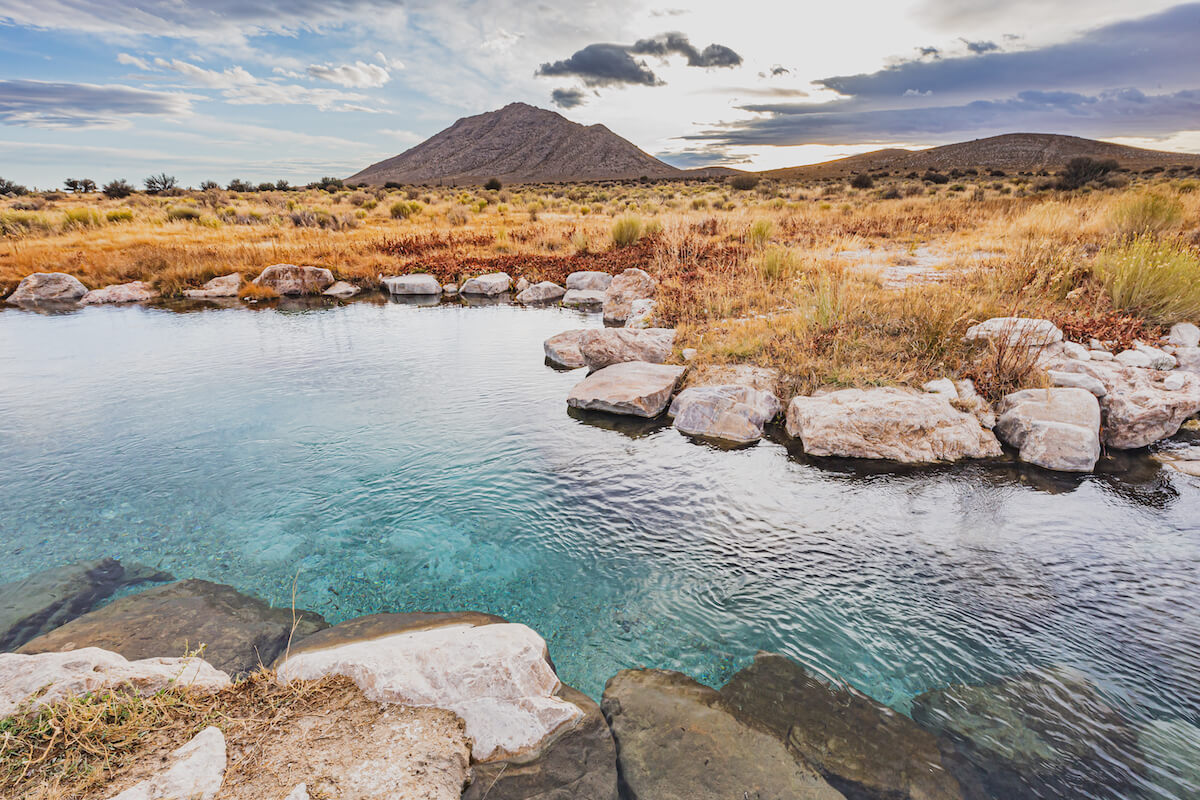
by DGR News Service | Nov 8, 2019 | Mining & Drilling
Written and photographed by Justin McAffee
On a warm late-summer day, an old friend and I drove down some 50 miles of gravel road through a remote part of Nevada’s Tule Desert. We spotted a flock of golden eagles, and one even landed on a nearby Joshua Tree. The moment was magical. Yet the moment was fleeting as we looked at the overlay map of parcels the BLM would be selling to oil companies for pennies on the dollar, right where we stood.
In the coming weeks, my friend from the Sierra Club would take me much further into Nevada’s Great Basin where in total an area the size of Delaware is up for sale by the BLM. We took pictures to document what was at stake.
One year earlier, on a three-day journey through the Great Basin and beyond, down a small watershed that drains into Lake Mead, I had been through the same places with a group of native people from Nevada. These places we perceive as “empty” deserts are not at all empty. They are teeming with all sorts of value beyond some corporation’s profit margins. They are full of life, plants, animals, life-giving water as well as human culture.
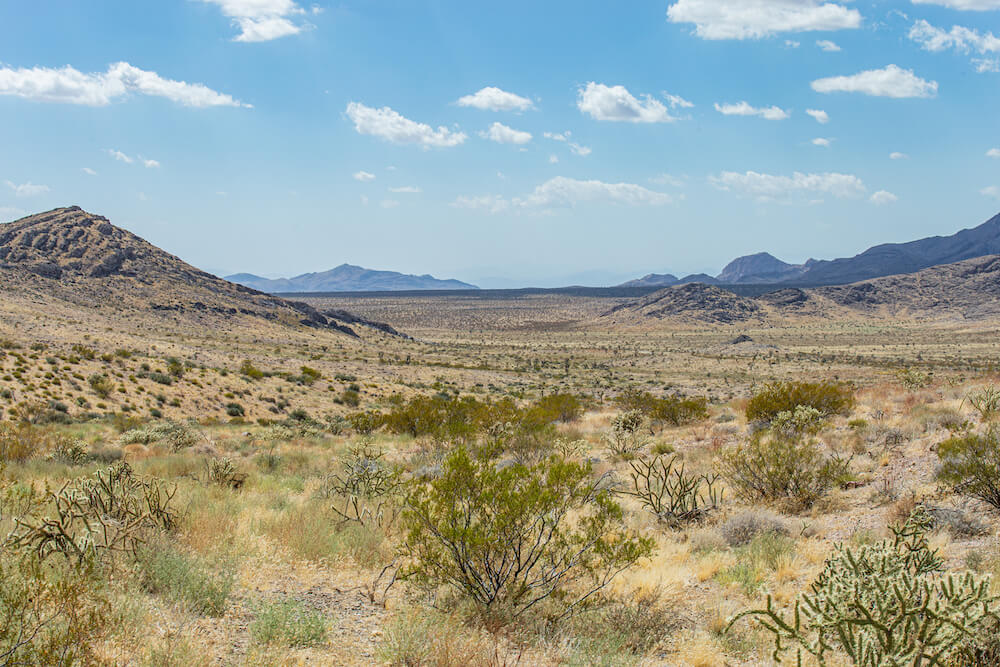
My wife and I were there to film a three-day run with indigenous people who were opposed to the construction of a water pumping system and 300-mile pipeline that would take water from Eastern Nevada and deliver it to the Las Vegas Valley. This run they called a sacred run. For these spirited and determined runners, it was more of a prayer than a protest. It was a prayer for the water, animals, plants and their own way-of-life threatened by neverending development by the colonizer culture still occupying their ancestral lands.
On the second day of the run, my wife and I stood on a hilltop with Western Shoshone Elder Johnnie Bobb. He wanted to show us a special place that was along the route of the run. He said it was a sacred place where his people and neighboring tribes would meet and pray. There was evidence that ceremony had taken place at the site previously, with red ribbons tied to tree limbs.
Johnnie Bobb offered prayers and burned sage while we were there. He told us how important these lands were to his people. The bones of their ancestors were buried there since time immemorial. The very land itself was tied to his people. To have them taken away was like having a part of one’s self taken.
We looked out over the valleys and mountains, pondering the moment. These places are shrinking by the minute. In fact, natural habitats are disappearing in the American West at a rate of one football field in size every 2.5 minutes. That’s an area the size of Los Angeles every year.
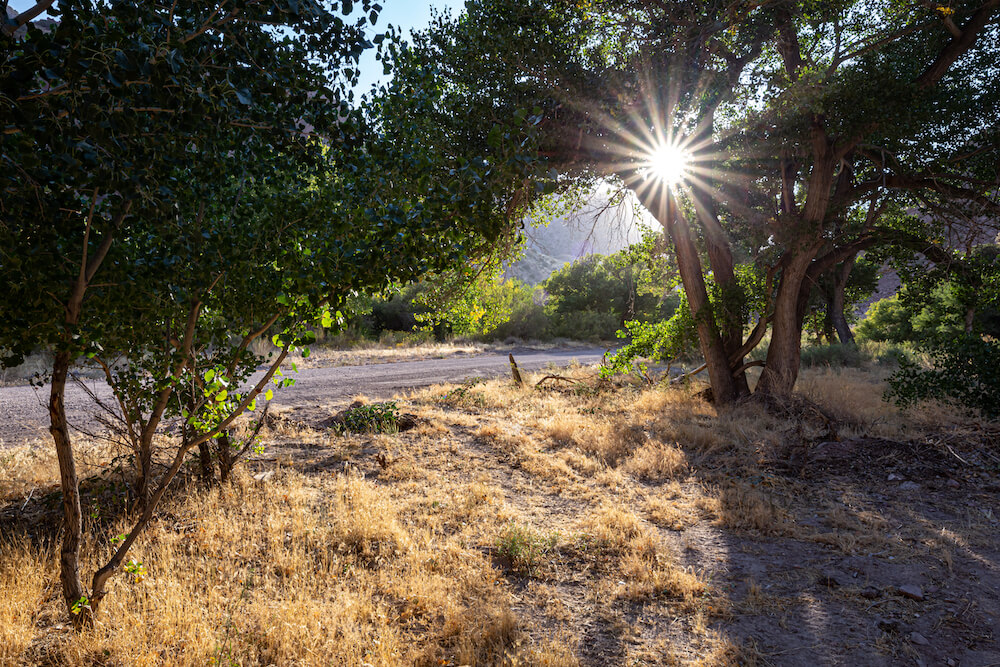
Our species has lived in mostly wild spaces for the better part of 200,000 years. If the time period of our species is a football field, we’ve only lived with agriculture for the last half yard, and industrial civilization for an inch or two. Undeveloped natural lands are in our DNA. The lack of connection with nature for western culture particularly is an obvious explanation for so many of our societal ills.
This Great Basin is among the few precious natural spaces left. We must take a stand now and say enough is enough. We can’t continue to exponentially build and grow until all of these places are consumed and gone forever. We can’t stand by any longer hoping someone else will put a stop to this. If not now, then when? If not us, then who?
As the great photographer Ansel Adams once said, “It is horrifying that we have to fight our own Government to save the environment.” Yet this is exactly what we must do. We must not tolerate any longer the destruction of these ancestral homelands, the homes of plant and animal species, and the land we need for the Earth to heal. We must fight.
Overview
90 percent of our public lands are available to oil and gas drillers while only 10 percent are available for a focus on conservation and other values including recreation and wilderness (
https://www.wilderness.org/articles/article/open-business-and-not-much-else-analysis-shows-oil-and-gas-leasing-out-whack-blm-lands). So it’s no surprise that over the
next 5 months, the BLM Ely district is offering up an area the size of Delaware to oil and gas companies. Their stated mission “to sustain the health, diversity, and productivity of America’s public lands for the use and enjoyment of present and future generations” is just a platitude. It’s mostly there to preserve potential profits for corporations.
Opening up these areas to fracking seems particularly ill-conceived, considering its a desert, water is already scarce, and they will be threatening the ground water, aquifers and water ways that feed our drinking supplies and feed plant and wildlife. Many of these parcels have watersheds that feed into Lake Mead, the primary drinking water for Las Vegas.
This is all part of taken lands that many indigenous people who still live on or near, and hold sacred. One of the areas we went to with Johnnie Bobb, the Wester Shoshone elder, where he did a blessing, was on a parcel up for sale.
Should these lands be explored for oil, there will be roads and other development necessary that will disrupt that natural habitat of flora and fauna of the Great Basin and Mojave, areas where the Joshua Tree and the desert tortoise are endangered.
Total Acres
The acreage for the March and February lease sale is 355,195 acres. The November lease sale is a total of 273 parcels encompassing 574,075 acres. The December lease sale is a total of 451 parcels encompassing 777,197.
Total in the Ely District: 1,706,467 by March of 2020.
Delaware is 1,592,780 acres.
BLM November Sales
BLM December Sales
BLM February and March Sales:
Map of the parcels for sale
Overview and Petition
This page has an overview of the issues. They tend to focus on the outdoor recreation economy and the attractive parks. But there is mention of the habitat threatened as well.
Rally on November 12th
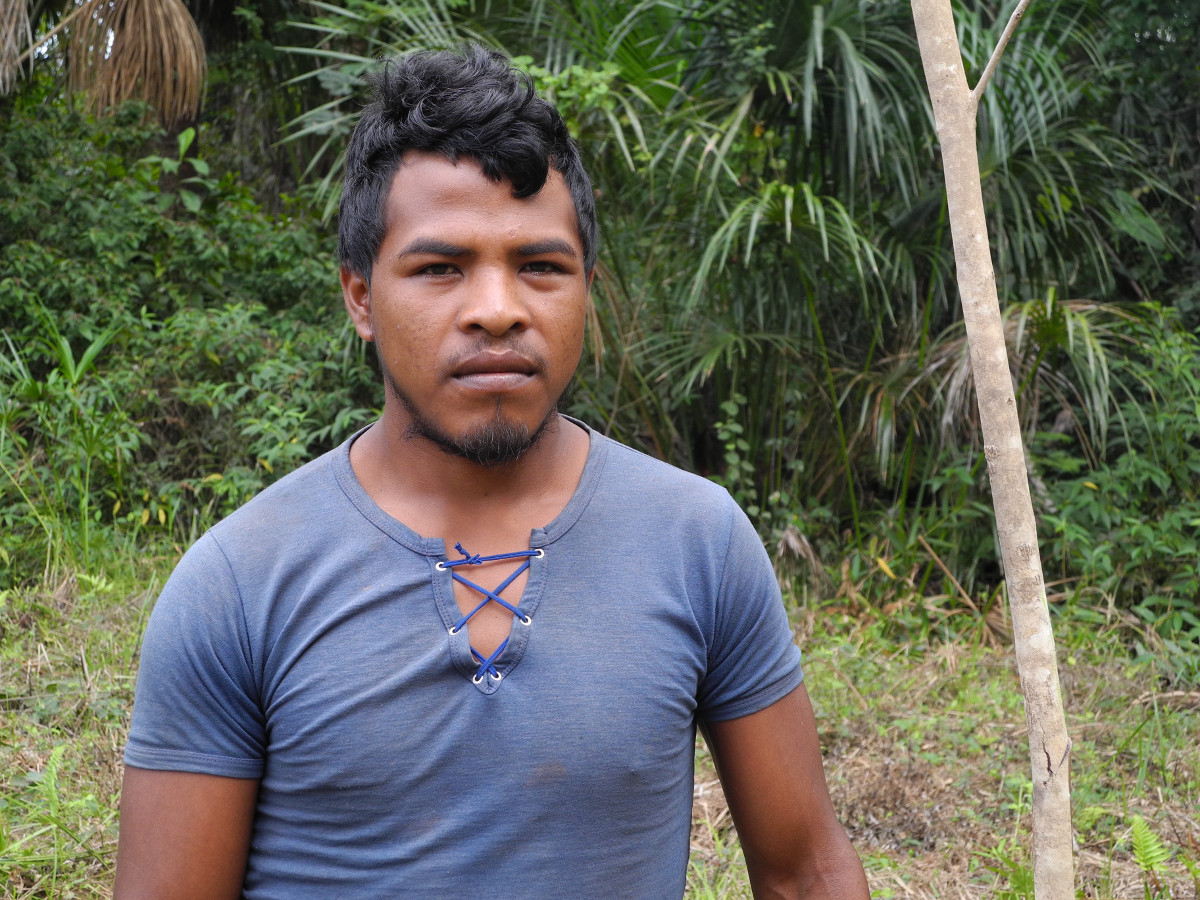
by DGR News Service | Nov 6, 2019 | Biodiversity & Habitat Destruction, Colonialism & Conquest, Defensive Violence, Direct Action, Human Supremacy, Movement Building & Support
Image: Sarah Shenker, Survival International
by Liam Campbell
Paulo Paulino Guajajara, known as Kwahu, has been murdered by loggers in a part of the Amazon currently occupied by the Brazilian government. Equipped with only rudimentary weapons and body armour, and lacking medical assistance, Rainforest Guardians like Guajajara regularly face death at the hands of both government officials and natural resource exploiters. Their only advantages are their intimate knowledge of the rainforest and their deep commitment to protecting those living systems. Guajajara was protecting both his own ancestral land and also the lands of their uncontacted neighbours, the Awá tribe, when he was shot and killed by assassins. Guajajara is not the first ecological activist to be murdered; in April, 3 Rainforest Guardians were similarly slain.
It’s difficult to write this article from the relative luxury and comfort of a Western European country, especially having experienced a small modicum of the difficulties of even living for a few days in jungles like the Amazon — let alone inhabiting those claustrophobic settings with the knowledge that well armed groups of men are hunting for you. I cannot even begin to imagine the courage Guajajara must have embodied in order to take on this critical work; ultimately these words are cheap compared to the very real actions of Rainforest Guardians. We must extend our support beyond words if we’re to meaningfully help them achieve their mission of protecting the world’s dwindling rainforests.
These courageous groups need funding for better defensive weaponry, body armour, combat medicine, training, and basic survival equipment. If we are unable or unwilling to put our own bodies on the front lines to protect nature, then we should share what resources we do have to protect the bodies of people who are willing to put their own lives at risk for the rest of us. Groups like Survival Interntional have a good reputation, or reach out to a Deep Green Resistance representative for additional recommendations.
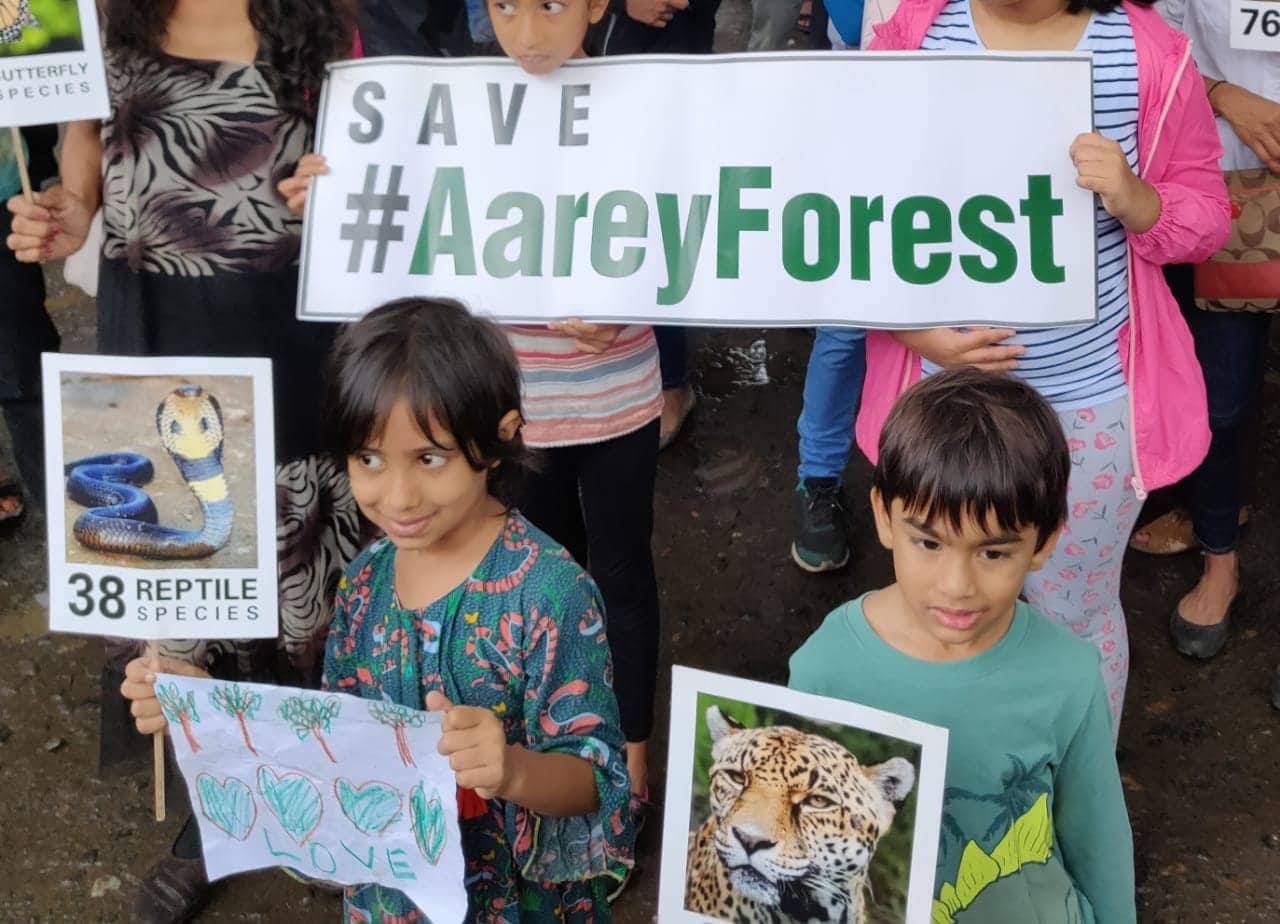
by DGR News Service | Oct 21, 2019 | Biodiversity & Habitat Destruction
By Salonika Neupane / Photos: Jalpesh Mehta (Empower Foundation) via Let India Breathe
Deforestation has been a major contributing factor towards environmental problems. Trees, in addition to providing oxygen, also sequester carbon. By cutting down trees, the amount of carbon dioxide in the atmosphere increases sharply, contributing to the problem of greenhouse effect.
Despite these often irrevocable damages, a 2015 study estimates that a total of 46% of trees have been felled since humans began cutting down trees. Deforestation often occurs due to commercial logging, or to turn the forest land for agricultural purposes (as is the case with the current deforestation in Amazon rainforest). In developing countries, a major cause of deforestation is the supposed development projects. These projects are often masked as an essential part of development, and any group opposing these projects are labeled “anti-development”, which makes it even more difficult for people to begin to question the necessity of the projects. Those who do resist have to spend valuable time and energy fighting off these labels.
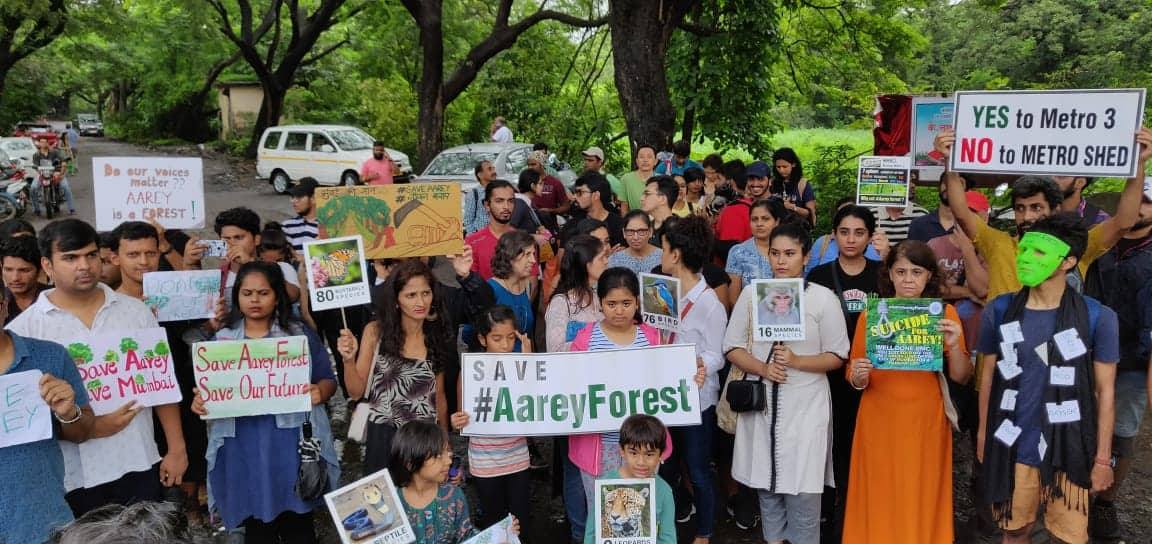 In India and Nepal, two “development” projects have been proposed that require felling of trees. In Mumbai, over 2600 trees in the Aarey area are to be felled to build a car shed (parking garage) for the Mumbai Metro Rail Corporation (MMRC). Aarey is a lively forest with a thriving natural community (aka ecosystem). Yet, Bombay High Court has failed to acknowledge Aarey as a forest. Meanwhile in Nepal, the ring road (encircling the Kathmandu valley) is set for its second phase of road expansion that is going to cut more than 2000 trees.
In India and Nepal, two “development” projects have been proposed that require felling of trees. In Mumbai, over 2600 trees in the Aarey area are to be felled to build a car shed (parking garage) for the Mumbai Metro Rail Corporation (MMRC). Aarey is a lively forest with a thriving natural community (aka ecosystem). Yet, Bombay High Court has failed to acknowledge Aarey as a forest. Meanwhile in Nepal, the ring road (encircling the Kathmandu valley) is set for its second phase of road expansion that is going to cut more than 2000 trees.
Both of the projects have been presented as a necessity for transportation of local people. But the general news fail to address some important facts. For example, in Mumbai, the Aarey forest is being cut down for a car shed of MMRC, not for the railways itself. Railways may play a significant role for the general public of Mumbai, but the car shed does not. On top of that, the MMRC is said to plant 100 times more trees than they cut down. Granting the naiveté of believing in that promise, saplings cannot replace an entire natural community.
Similarly, the road expansion of ring road is sold out as a magical solution to the problem of overcrowded traffic in Kathmandu. None of the residents in Kathmandu would debate that overcrowding of traffic is not a problem in Kathmandu. Yet, time and again it has been demonstrated that road expansions are only a temporary solution to the problem. Within a few years, the number of private vehicles also rise, culminating in the problem of overcrowded traffic of similar, if not worse, intensity. Not to mention, the initial phase of road expansion has caused a sharp increase in the number of road accidents in Kathmandu, causing the recently expanded area to be called the “death trap”.
The deforestation has not gone unnoticed in both of the cities. Environmental groups and local people have both protested against both of these. The intensity of public support for protest is stronger in Mumbai than in Kathmandu, with politicians and celebrities coming up against the proposed deforestation in Mumbai.
Yet, deforestation in both of these areas have begun despite the protests. After the Bombay High Court permitted the project to continue on Friday, MMRC workers began to cut down trees in the middle of the night. The time was chosen so that protesters would not be able to protect the forest. The next day, cutting down trees continued with police protection despite the protests. Many of the activists were arrested. On Monday, the Supreme Court of India issued a stay order in the tree-felling, but over 2100 trees have already been cut.
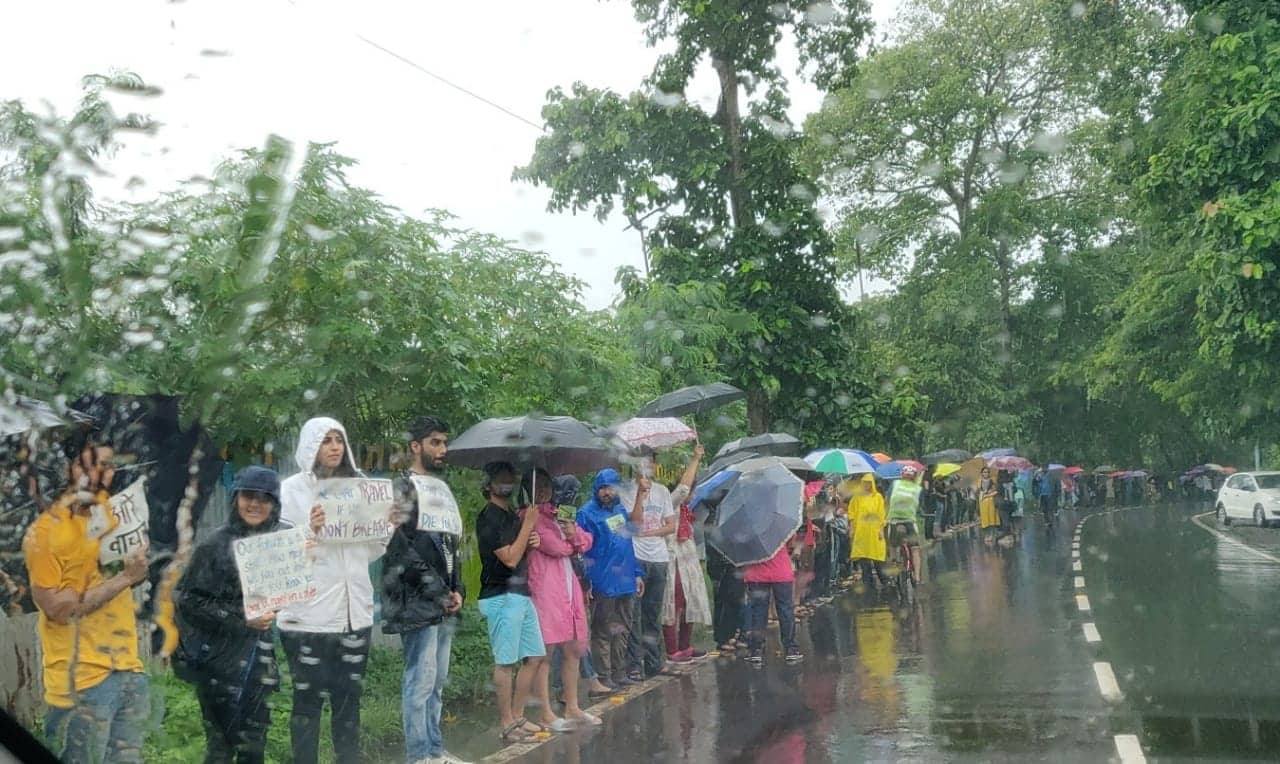 In Kathmandu, cutting down trees began during a major festival of the country. Kathmandu, being the capital, is populated with many immigrants from all over the country. During this time, most return to their natal homes to celebrate the biggest festival of the year with their family and relatives. As a result, the valley is relatively sparsely populated. It was during this opportunistic period that felling of trees began.
In Kathmandu, cutting down trees began during a major festival of the country. Kathmandu, being the capital, is populated with many immigrants from all over the country. During this time, most return to their natal homes to celebrate the biggest festival of the year with their family and relatives. As a result, the valley is relatively sparsely populated. It was during this opportunistic period that felling of trees began.
Protests against deforestation has been rising globally, which may have had an influence in the protests in Mumbai and Kathmandu as well. The Climate Strike movements initiated by Greta Thunberg has helped spark a discussion against climate change in general. Thus, people have become more aware regarding environmental issues. Similarly, people across the world have been opposing the plan for the Brazilian government to allow agricultural industry to clear parts of the rainforest. It has helped bring attention to the significance of forests. Indigenous people have always resisted against the felling of trees. In some cases, indigenous communities have taken matters into their own hands to prevent illegal logging.
Effective strategies often need to address the specific nature of the problems within each context. While the two problems (in Mumbai and Kathmandu) appear similar, there are some major differences. Protests in Mumbai has been able to attract a very high number of supporters, which unfortunately is not the case in Kathmandu. With an exception of environmental groups and a minority of people, it seems the general public have accepted roads expansion as a miraculous cure to the problem of overcrowding of traffic.
As such, the two problems also require different strategies for action. For the Aarey conversation, what is required now is to provide tools to the protesters, like legal support. For the people in Kathmandu, a more basic approach is required: to get the people to question the necessity and fruitfulness of the road expansion in the first place.
References
Choudhary, Amit Anand, & Mehta, Manthan K. (2019, October 8). SC stays tree-felling at Aarey till October 21, but 98% already cut. Published in The Times of India. Accessed from https://timesofindia.indiatimes.com/india/sc-stays-tree-felling-at-aarey-till-october-21-but-98-already-cut/articleshow/71485076.cms
Crowther, T. W. et al. (2015). Mapping tree density at a global scale. Nature, 525, 201-205. Abstract available at https://www.nature.com/articles/nature14967
Ojha, Anup. (2018, May 26) Ring Road part ‘death trap’. Published in The Kathmandu Post. Accessed from https://kathmandupost.com/national/2018/05/26/ring-road-part-death-trap
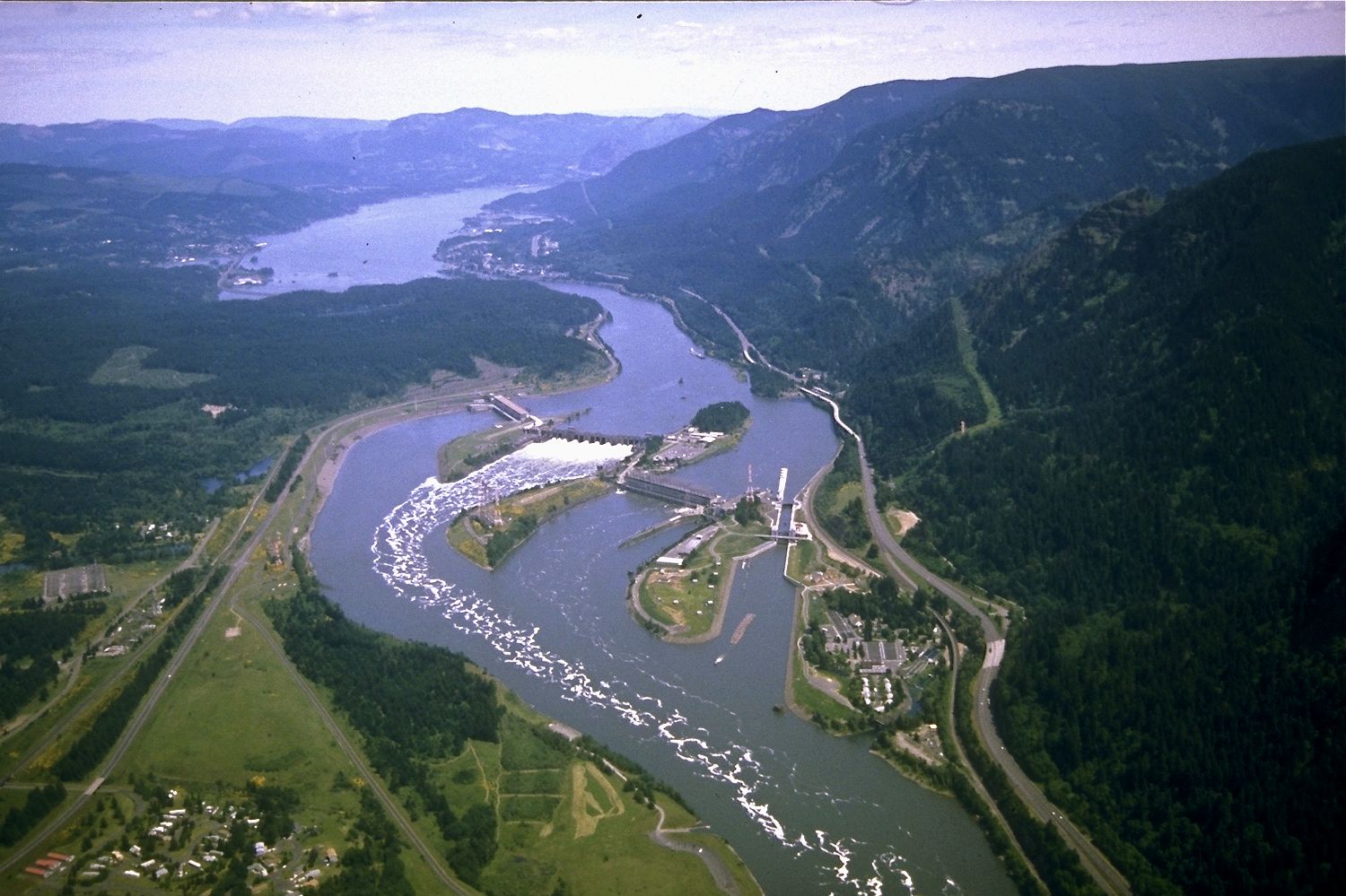
by DGR News Service | Oct 18, 2019 | Biodiversity & Habitat Destruction, Indigenous Autonomy
Editors note: The Columbia River has been turned into a slave of civilization, forced to provide hydroelectricity, barge transport, and irrigation water to cities and big agribusiness. It is shackled in concrete and dying from dams, from overfishing, from toxins, from nuclear waste, from acoustic barrages and armored shorelines and logging and endless atrocities.
We at Deep Green Resistance do not believe that the federal government will accede to demands such as these. Furthermore, there are thousands of dams currently under construction or proposed worldwide. There are millions of dams in the “United States.” The salmon, the Orca whales—they have no time to waste. Everything is heading in the wrong direction. Therefore, we call for a militant resistance movement around the world to complement aboveground resistance movements and to dismantle industrial infrastructure.
Featured image: The Columbia River is constrained by Bonneville Dam, and bracketed by clearcuts, highways, and utility corridors. Public domain.
Confederated Tribes and Bands of the Yakama Nation
On Indigenous Peoples’ Day, October 14, 2019, the Yakama Nation and Lummi Nation hosted a press conference urging the removal of the lower Columbia River dams as part of a broader call for federal repudiation of the offensive doctrine of Christian discovery, which the United States uses to justify federal actions that impair the rights of Native Nations. The press conference took place this morning at Celilo Park near Celilo Village, Oregon.
“The false religious doctrine of Christian discovery was used by the United States to perpetuate crimes of genocide and forced displacement against Native Peoples. The Columbia River dams were built on this false legal foundation, and decimated the Yakama Nation’s fisheries, traditional foods, and cultural sites,” said Yakama Nation Tribal Council Chairman JoDe Goudy. “On behalf of the Yakama Nation and those things that cannot speak for themselves, I call on the United States to reject the doctrine of Christian discovery and immediately remove the Bonneville Dam, Dalles Dam, and John Day Dam.”
The doctrine of Christian discovery is the fiction that when Christian European monarchs obtained what was for them new knowledge of the Western Hemisphere, those monarchs had a religious right of domination over all non-Christian lands. This doctrine was propagated by the Roman Catholic Church through a series of papal bulls in the 15th century, including a papal bull authorizing Portugal to “invade, search out, capture, vanquish, and subdue all Saracens and pagans” and to place them into perpetual slavery and take their property. The Roman Catholic Church then implemented a framework where the right to subjugate the Americas was split between Spain and Portugal, although they were later joined by other European states. The doctrine was therefore one of domination and dehumanization of Native Peoples, and was used to perpetuate the most widespread genocide in human history.
In 1823, the United States Supreme Court used the doctrine of Christian discovery as the legal basis for the United States’ exercise of authority over Native lands and Peoples. See Johnson v. M’Intosh, 21 U.S. 543 (1823). The Court found that the United States holds clear title to all Native lands subject only to the Native Nation’s right of occupancy, which the United States can terminate through purchase or conquest. In relying on the doctrine of Christian discovery, the Court described it as “the principle that discovery gave title to the government . . . against all other European governments, which title might be consummated by possession.” Id. at 573. The Court used this religious doctrine of domination and dehumanization to unilaterally deprive Native Nations of their sovereign rights, racially juxtaposing the rights of “Christian peoples” against those “heathens” and “fierce savages.” Id. at 577, 590.
In the years that followed, this false religious doctrine became the bedrock for what are now considered to be foundational principles of federal Indian law. In United States v. Kagama, 188 U.S. 375 (1886), and Lone Wolf v. Hitchcock, 187 U.S. 553 (1903), the Court announced Congress’ extra-constitutional plenary power over all Indian affairs—the plenary power doctrine — which it justified by pointing to Native Nations’ loss of sovereign, diplomatic, economic, and property rights upon first ‘discovery’ by Europeans. In The Cherokee Tobacco, 78 U.S. 616 (1870), the Court applied the doctrine and held that Congress can unilaterally abrogate Treaty rights with subsequent legislation unless there is an express exemption provided in the Treaty—the last-in- time doctrine. In Oliphant v. Suquamish Indian Tribe, 435 U.S. 191 (1978), the Court deprived Native Nations of criminal jurisdiction over non-members based on the statement in M’Intosh that Native Nations’ rights “to complete sovereignty, as independent nations, were necessarily diminished” by European ‘discovery’ — the diminished tribal sovereignty doctrine. These legal doctrines have been weaponized against Native Nations ever since, including by Congress in authorizing construction of the Bonneville Dam, Dalles Dam, and John Day Dam without the Yakama Nation’s free, prior, and informed consent.
The history of the lower Columbia River dams can be traced back to 1792, when United States Merchant Robert Gray sailed up our N’chi’Wana (Columbia River) and claimed the territory for the United States. Mr. Gray entered our lands and performed a religious doctrine of discovery ceremony by raising an American flag and burying coins beneath the soil, thereby proclaiming dominion over our lands and our families without our knowledge or consent. Following the War of 1812, the United States and England falsely claimed joint authority over what became known as the Oregon Territory until 1846, when England relinquished its claim south of the 49th parallel. Having eliminated British opposition, Congress passed the Oregon Territorial Act of 1848 and the Washington Territorial Act of 1853. Both Territorial Acts reserve the United States’ claim to the sole right to treat with Native Nations, thereby maintaining the federal government’s doctrine of Christian discovery-based claims.
At the Walla Walla Treaty Council in May and June of 1855, the Yakama Nation’s ancestors met with United States representatives to negotiate the Treaty with the Yakamas of June 9, 1855. Article III, paragraph 2 of the Treaty reserves the Yakama Nation’s “right of taking fish at all usual and accustomed places . . .” including many places throughout the Columbia River basin. At no point during these negotiations did the United States express a claimed right of dominion over the Yakama Nation’s traditional lands that would allow the United States to unilaterally ignore the Treaty. Territorial Governor Isaac I. Stevens did not explain that the United States would dam the rivers and violate the Yakama Nation’s Treaty-reserved fishing rights without the Yakama Nation’s free, prior, and informed consent.
What followed was a 100-year conquest of the Columbia River by the United States. First, the United States Supreme Court paved the way by affirming federal regulatory authority over navigable waterways like the Columbia River in Gilman v. Philadelphia, 70 U.S. 713 (1866), and Congress’ extra-constitutional plenary authority over Indian affairs in United States v. Kagama, 188 U.S. 375 (1886). Congress then exercised this supposed authority by passing a series of legislative acts without the Yakama Nation’s consent, including Rivers and Harbors Acts, Right of Way Acts, the General Dams Act, the Federal Water Power Act, and the Bonneville Project Act, all of which facilitated construction of the lower Columbia River dams without regard for the Yakama Nation’s Treaty-reserved rights.
During the Depression, Congress passed the National Industrial Recovery Act authorizing President Franklin D. Roosevelt to approve public works projects like the Bonneville Dam. Construction started in 1933, but President Roosevelt’s approval of the project was quickly deemed unconstitutional in Schechter Poultry Corp. v. United States, 295 U.S. 495 (1935). The authorization was an unconstitutional delegation of legislative authority from Congress to the President. It should have been deemed unconstitutional under the United States Constitution’s Supremacy Clause — which says the Treaty of 1855 is the “supreme law of the land” — because it was inconsistent with the rights reserved to the Yakama Nation by Treaty. Any argument to the contrary is an argument that Congress has plenary power over Indian affairs rooted in the false religious doctrine of Christian discovery.
Congress quickly re-approved the Bonneville Dam’s construction, which was completed in 1938. The Dalles Dam was built from 1952 to 1957, and the John Day Dam was built from 1968 to 1972. The Yakama Nation, as co-equal sovereign and signatory to the Treaty of 1855, never approved the construction of these dams. They inundated the villages, burial grounds, fishing places, and ceremonial sites that we used since time immemorial. Celilo Falls was the trading hub for Native Peoples throughout the northwest. The United States detonated it with explosives and drowned it with the Dalles Dam. After the Dalles Dam’s construction had already started, the United States negotiated an insignificant settlement with the Yakama Nation for the damage caused by the Dam. This was domination and coercion, not consent.
Today, the lower Columbia River dams stand as physical monuments to the domination and dehumanization that the United States continues to impose on Native Nations under the false religious doctrine of Christian discovery. “Columbus Day is a federal holiday celebrating the Christian-European invasion of our lands under the colonial doctrine of Christian discovery. Today, the Yakama Nation rejects that narrative by celebrating Indigenous Peoples’ Day and calling on the United States to remove the lower Columbia River dams that were built without our consent using the same false religious doctrine,” said Chairman Goudy.
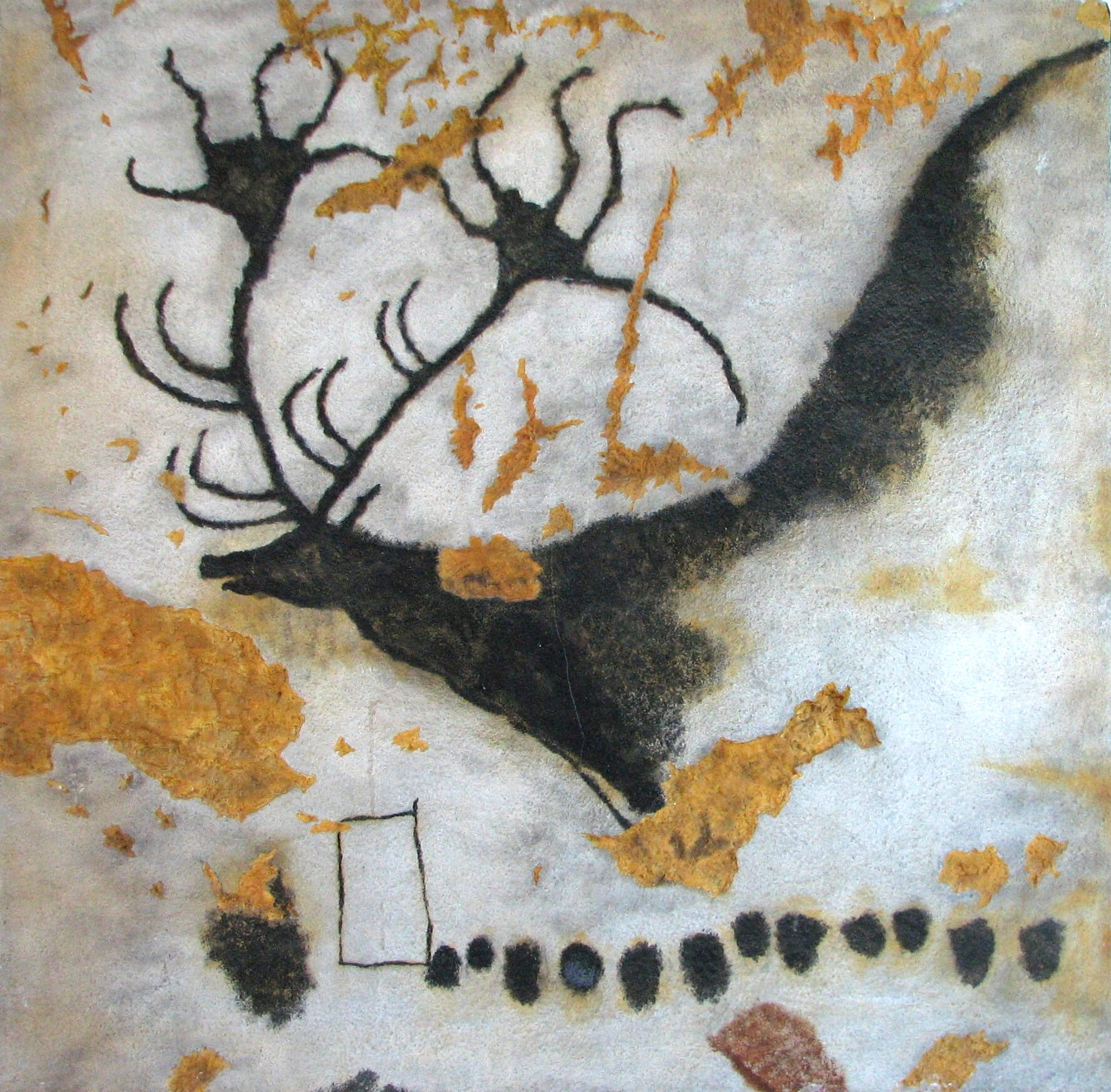
by DGR News Service | Oct 7, 2019 | Agriculture
Editor’s note: people with various diets are involved in Deep Green Resistance. Critical analysis of agriculture is central to our understanding.
By Lierre Keith
Start with a sixteen-year-old girl. She has a conscience, a brain, and two eyes. Her planet is being drawn and quartered, species by species. She knows it even while the adults around her play shell games with carbon trade schemes and ethanol. She’s also found information that leaves her sickened in her soul, the torment of animals that merges sadism with economic rationality to become the US food supply. Their suffering is both detailed and institution- ally distant, and both of those descriptors hold their own horrors.
A friend of mine talks about “the thing that breaks and is never repaired.” Anyone who has faced the truth about willful or socially- sanctioned cruelty knows that experience: in slavery, historic and con- temporary; in the endless sexual sadism of rape, battering, pornography; in the Holocaust and other genocides. You’re never the same after some knowledge gets through with you. But our sixteen-year-old has courage and commitment, and now she wants to do what’s right.
The vegetarians have a complete plan for her. It’s simple. You can create justice for animals, for impoverished humans, and for the earth if you eat grains and beans. That simplicity is part of its appeal, partly because humans have a tendency to like easy rules. But it also speaks to our desire for beauty, that with one act so much that’s wrong can be set right: our health, our compassion, our planet.
The problem is they’re wrong, not in their attempts to save the world, but in their solution. The moral valuing of justice over power, care over cruelty and biophilia over anthropocentrism is a shift in values that must occur if we are to save this planet. I didn’t call this book The Vegetarian Lie. I called it The Vegetarian Myth for a reason. It’s not a lie that animals are sentient beings currently being tortured for our food. It’s not a lie that the rich nations are siphoning off the life of the planet for literally oceans full of endless, empty plastic junk. It’s not a lie that most people refuse to face the systems of domination— their brute scale—that are destroying us and the earth.
But the vegetarians’ solution is a myth based on ignorance, an ignorance as encompassing as any of those dominating systems. Civilization, the life of cities, has broken our identification with the living land and broken the land itself. “The plow is the … the world’s most feared wrecking ball,” writes Steven Stoll. For ten thousand years, the six centers of civilization have waged war against our only home, waged it mostly with axes and plows. Those are weapons, not tools. Never mind reparations or repair: no peace is possible until we lay them down.
Those six centers were each driven by a tight cohort of creatures, at the center of which stand an annual plant or two. And humans have been so useful to corn and rice and potatoes, clever enough to conquer perennial polycultures as vast as forests, as tough as prairies, but not smart enough to see we’ve been destroying the world. The cohort has often included infectious diseases, diseases like smallpox and measles that jumped the species barrier from domesticated animals to humans. Humans who stood in the way of civilization’s hunger have been eradicated by the millions through civilization’s microbes, the first clear-cut preparing the way for the plow.
This is the ignorance where the vegetarian myth dead ends. Life must kill and we are all made possible by the dead body of another. It’s not killing that’s domination: it’s agriculture. The foods the vegetarians say will save us are the foods that destroy the world. The vegetarian attempt to remove humans from a paradigmatical pinnacle is commendable. And it’s crucial. We will never take our true place, one sibling amongst millions, sharing a common journey from carbon to consciousness, sacred and hungry, then back to carbon, without firmly and forever rejecting human dominion.
But in order to save the world we must know it, and the veg- etarians don’t, not any more than the rest of the civilized, especially the industrially so. Hens driven insane in battery cages are visible to vegetarians; both morally and politically that insistent sight is needed. What are invisible are all the other animals that agriculture has driven extinct. Entire continents have been skinned alive, yet that act goes unnoticed to vegetarians, despite the scale. How do they not see it? The answer is they don’t know to look for it. We are all so used to a devastated landscape, covered in asphalt and the same small handful of suburban plants, a biotic coup of its own. The whole east coast should be one slow sigh of wetland, interspersed with marsh meadows and old growth forest. It’s all gone, replaced by a McMonocrop of houses, shackles of asphalt, the brutal weight of cities.
Where the water goes shy, the trees should thin to savanna and prairie, although even there the wetlands should cradle the rivers. But there’s nothing left. The deltas and swamps, bison and black terns, have been turned into soy and wheat and corn. The capitalists say we should turn those into animal units; the vegetarians say we should dump them near the starving; I say we should stop growing them and let the world come back to life. Then we can take our place again, that place that the vegetarians claim to want, our place as participants.
We can dominate or we can participate but there is no way out. That’s what no one is telling that sixteen-year-old. The earth is liter- ally dying for wetlands and forests, rivers and prairies. And if humans would simply step aside, the world would do the work of repairing itself. But that repair involves death. It means letting the beavers eat the trees, letting the wolves eat the beavers, letting the soil eat us all. It means taking down every last dam and letting the salmon come home to lay their eggs and be eaten, and in the eating become the forest. This is the world as it should be, resiliently nourishing itself, the gift both given and received. No one is going to tell that sixteen- year-old girl the truth, because there’s no one left in her world who knows it.
Letting the beavers come back will mean that wetlands may well cover one-third of the land in places. Those wetlands can’t coexist with our roads and suburbs and agriculture. So where does your loyalty lie? Ask yourself that question as if you really mean it. Those wetlands would also feed us forever. To bring the wolves back would require a similar and massive contracture of human activity: they need land, wild land, sturdy with functioning forests and grasslands, not broken by cars, gouged into subdivisions, and coerced into mono- crops. You can’t have it both ways, vegetarians. If you want to save this world, including its animals, you can’t keep destroying it. And your food destroys it.
If you want rules about what to eat, I can give you some principles. They’re slightly more complicated than “Meat Is Murder,” but then the living world is complex, and beholding it should leave us all aching with awe. So start with topsoil, the beginning place. Remember, one million creatures per tablespoon. It’s alive, and it will protect itself if we stop assaulting it. It protects itself with perennial poly- cultures, with lots and lots of plants intertwining their roots, adding carbonaceous leaves, and working together with mycelium, bacteria, protozoa, making a new organism between them, the mycorrhiza that talks and nourishes and directs.
Defend the soil with your life, reader: there is no other organism that can touch the intelligence of what goes on beneath your feet.
So here are the questions you should ask, a new form of grace to say over your food. Does this food build or destroy topsoil? Does it use only ambient sun and rainfall, or does it require fossil soil, fossil fuel, fossil water, and drained wetlands, damaged rivers? Could you walk to where it grows, or does it come to you on a path slick with petroleum?
Everything falls into place with those three questions. Those annual monocrops lose on all three counts, unless you live in Nebraska, where it “only” fails the first two. Animal rights philosopher Peter Singer argues that you should only eat animal products if you can see their origin with your own eyes. While I agree with the impulse—to end the denial and ignorance that protect factory farming—this demand has to be much bigger: you should know where every bite of your food comes from. We need to end the denial and ignorance that protect agriculture. The worldview that gives any and all plant foods an automatic pass is profoundly blind to how those very foods devour living communities. Go look at Nebraska, where the native prairie is 98 percent gone. Even if you’ve never seen an Audubon bighorn or a swift fox, you must surely miss them.
We’ve all built this living world of gift and need, birth and return. To repair this planet, we must take our sustenance as part of those relationships instead of destroying them. We can pull the forest down or we can eat the deer that live there. We can rip up the grass or we can eat the bison that should stretch across the plains. We can dam the rivers or we can eat the fish that could feed us forever. We can turn biologic processes into commodities until the soil is salt and dust, or we can take our place as another hungering member of an ancient tribe, the tribe of carbon. All flesh is grass, wrote someone named Isaiah in a book I don’t usually quote. In Hebrew, the word translated as “flesh” is basar, meaning meat, something one eats. Isaiah understood what is no longer physically visible to us, living at the end of the world: we are all a part of one another, made from grass, become meat.
“But food requires destruction,” a vegan argued with me, in an e-mail exchange that went exactly nowhere. That is the final myth you must face, vegetarians. Because the food I am proposing, the food of our ancestors, whose paleolithic hearts and souls we still inhabit, does not require destruction. At this moment it would in fact require repair and restitution: the forests and grasslands mended, conquered territory ceded back to the earth for her wetlands. Steven Stoll sums up agriculture: “Humans became parasites of the soil.” It’s your food that has brought us to the end of the world.
My food builds topsoil. I’ve watched it happen. The mixture of grasses and trees, cousins in their own right, provides for the animals, who in their turn maintain and nourish by their simple biological functions of eating and excreting. On Joel Salatin’s Polyface Farm— the mecca of sustainable food production—organic matter has increased from 1.5 percent in 1961 to 8 percent today. The average right now in the US is 2-3 percent. In case you don’t understand, let me explain. A 6.5 percent increase in organic matter isn’t a fact for ink and paper: it’s a song for the angels to sing. Remember that pine forest that built one-sixteenth of an inch of soil in fifty years? Cue those angels again: Salatin’s rotating mixture of animals on pasture is building one inch of soil annually.
Peter Bane did some calculations. He estimates that there are a hundred million agricultural acres in the US similar enough to the Salatins’ to count: “about 2/3 of the area east of the Dakotas, roughly from Omaha and Topeka east to the Atlantic and south to the Gulf of Mexico.” Right now, that land is mostly planted to corn and soy. But returned to permanent cover, it would sequester 2.2 billion tons of carbon every year. Bane writes:
That’s equal to present gross US atmospheric releases, not counting the net reduction from the carbon sinks of existing forests and soils … Without expanding farm acreage or removing any existing forests, and even before undertaking changes in consumer lifestyle, reduction in traffic, and increases in industrial and transport fuel efficiencies, which are absolutely imperative, the US could become a net carbon sink by changing cultivating practices and marketing on a million farms. In fact, we could create 5 million new jobs in farming if the land were used as efficiently as the Salatins use theirs.
Understand: agriculture was the beginning of global warming. Ten thousand years of destroying the carbon sinks of perennial polycultures has added almost as much carbon to the atmosphere as industrialization (see Figure 5, opposite), an indictment that you, vegetarians, need to answer. No one has told you this before, but that is what your food—those oh so eco-peaceful grains and beans—has done. Remember the ghost acres and the ghost slaves? What you’re eating in those grains and beans is ghost meat, down to the bare bones of whole species. There is no reconciling civilization and its foods with the needs of our living planet.

To save the world, we must first stop destroying it. Cast your eyes down when you pray, not in fear of some god above, but in recognition: our only hope is in the soil, and in the trees, grasses, and wetlands that are its children and its protectors both.
“And why are we not doing this now?” is the clarion call Bane ends with. For a lot of reasons, most of them having to do with power. But a new populism could spring from this need, a serious political movement combining environmentalists, farm activists, animal rights groups, feminists, indigenous people, anti-globalization and relocalization efforts—all of us who are desperate for a new, and living, world.
That’s the real reason I’ve written this book. The earth, our only home, needs that movement, and she needs it now. The only just economy is a local economy; the only sustainable economy is a local economy. Come at it from whichever angle matches your passion, the answers nest around the same central theme: humans have to draw their sustenance from where they live, without destroying that place.
That means that first we must know that place. I can’t give you a list of what to eat because I don’t know what can live where you do. I can only give you the principles I’ve already laid out. Then you’ll have to ask questions. How much rain falls where you are? What’s the terrain, the temperature, the soil? Dairy cattle, for instance, do great things where I live in cold, wet New England. I wouldn’t suggest them in dry New Mexico.
Understand my point. Farming—the growing of annual mono- crops—will never be sustainable. Our only chance is a judicious and humble human participation in perennial polycultures. We can do that poorly, as demonstrated in the overgrazing due to population pressures that is currently turning grasslands to desert the world over. Or we can do it well, like the Fulani of Africa, with a largely unbroken line reaching back to a pre-human time four million years ago.
How much can we change the landscape before participation becomes destruction? Especially when our impact may not be visible for a thousand years? Should we, for instance, use fire? Fire will drive out some species, both plant and animal, and encourage others. Where I live, sugar maples are iconic. Yet five hundred years ago, they wouldn’t have been here, or not many of them. The burning practices of Native Americans kept the forest here shifted toward fire-resistant and mast-bearing trees. That information was a shock
to my system: don’t mess with my maple trees. But Brian Donahue makes the point that as long as there has been a forest in New Eng- land, there have been humans living in it. We belong here, too, if we would just behave like it. The pristine forest free of human influence has never existed here, so is it the ideal we should be aiming for?
If so, that ideal must presuppose a devastated landscape some- where else and an interstate highway system to transport the foods produced out of it. None of this can last: not the devastation, the fossil fuel, the distance. We need to eat where we live and our food must be part of the repair of our home.
Let’s look at an example. Do dairy cows belong in New Eng- land? In the here and now, as I make my personal and political decisions about breakfast, are cows on the side of good or do they need to be hauled up Mount Doom?
Dairy cattle were brought over from Europe four hundred years ago. Does that rule them out automatically? But if you dig deeper into the past, there were once thirty-three more genera of large mammals on this continent, relatives of horses, cows, elephants, giraffes— and not that long ago, a mere 12,000 years. Their absence has left evolutionary widows, trees like honey locust and osage orange that are in decline because they need large herbivores to help them.9 In that sense, horses and cows were perhaps reintroduced with the spread of Europeans. So dig deeper still. Are these new animals similar enough to the ones that are gone, or do their divergences make them destructive assailants on the land base? There were, for instance, once equids here, but they had cloven hooves and no upper teeth. The result of the solid hooves and incisors is “ecological havoc.”10 The feral horses from Europe destroy desert seeps and springs, smother spawning gravel with silt, and strip grasslands to bare dirt. The most in-depth analysis of nineteen study sites found severe damage to “soils, rodents, reptiles, ants, and plants.” That damage puts species from desert tortoises to the endangered Lahontan cutthroats at risk.
There are clearly brittle landscapes too fragile for cows—especially for dairy cows—as well. Most of the west is more suited to the animals that were already there—buffalo, pronghorns, elk—and that’s what the people there should be eating. So that’s a directive: restore the prairie, long grass and short, and the drylands, and return their animal cohorts. Then think long and hard about other megafauna and their place on this continent. Do the grasslands and savannas want them back, or their relatives that still survive? What about the honey locust and osage orange, who need their large seeds to be di- gested and carried by large herbivores? Is their dying simply evolution at work? If we humans reintroduce some creature that might fulfill that function and restore the range of those trees, is that also evolu- tion? Or is that interference?
And I still need to decide about breakfast.
Cattle on pasture in my climate can easily be sustainable. Joel Salatin is certainly proving that. The model is sound and the climate and rainfall are suitable. But pasture isn’t the natural landscape of New England. Forests, wetlands, and marsh meadows are. The Europeans’ cows first grazed in those meadows and forests. As the beaver were eradicated, the wetlands and marsh meadows disappeared. Meanwhile, in Europe, experimentation with plant admixtures improved the sustainability of pastures dramatically. How does turning some forest land into pasture compare with the habitat shift of burning? Both of these are activities that, done well, will build topsoil and provide for human sustenance essentially forever. So how much impact are we allowed to have? The entire rainforest is a human project. Small patches are burned by the indigenous like the Lacandon Mayan, and then planted in a secession of eighty different crops, including the vines, shrubs, and trees that will take over when the plot has been abandoned—though “abandoned” is not really an accurate description, as the plot will be revisited in a twenty-year rotation, and will meanwhile produce food, fiber, and building materials, as well as a home for the wild animals that serve as protein.
Which brings me to my point. It wasn’t pasture that brought down the northeast forest. It was coal. As long as the human economy was based on wood in this cold climate, people more or less took care of the forest, because they needed it. Coal was what reduced the forest to simply one more commodity, and the land that forests grew on was more profitably used for wool breeds of sheep. What will happen as the price of oil first climbs past what the average household can pay, then past the effort worth retrieving it from the ground? Will New England be cleared from the Atlantic Ocean to the Housatonic River as people freeze to death? Or will the rural areas and private woodlot owners be able to hang onto their parts of this young forest, knowing that without it they, too, will soon freeze? Will we be facing a war not over Middle Eastern oilfields, but over trees in the Berkshires?
And I still need to decide about breakfast.
I can raise these issues, but maybe I can’t answer the questions.
I know that whatever we’re eating has to build soil, and if it doesn’t, it has to be struck forever from the human menu. It has to be part of a self-replicating community, where life and death are inseparable in the process of nourishment. Everyone has to give back, through the labor of their life functions, and then through the nutrients stored in their bodies. Our food can’t be based on fossil fuel, for nitrogen or energy. Nor can it use fossil water, or indeed any water that empties a river.
Dairy cows, where I live, meet those criteria and more. But is the change in species composition wrought by human-set fire on the acceptable side of the line while the change required for pasture placed in the unacceptable column? Then what we will eat instead will be deer and moose. Both of those, along with bison, migrated here from Eurasia not too long ago, maybe 12,000 years. They filled in niches left empty by the megafaunal extinctions. They’re Eurasian trans- plants, too. Do you see how complicated this gets?
And I still need my breakfast.
In the end, I do have my own answers to offer, of course, but they involve a bit more than drinking soy milk. Agriculture has to stop. It’s been a ten thousand year disaster, as life on earth will tell us if we listen. Writes William Catton:
The breakthrough we called industrialization was fundamentally unlike earlier ones. It did not just take over for human use another portion of the web that had previously supported other forms of life. Instead, it went underground to extract carrying capacity supplements from a finite and depletable fund …
As discussed earlier, I think the beginning of the fossil fuel age does mark a new level of human destructiveness, but he’s wrong in his characterization of agriculture as simply taking over more ecological niches. Agriculture is extractive: soil is depletable and “peak soil” was ten thousand years ago, on the day before agriculture began. We’ve been on the down curve ever since.
So agriculture has to stop. It’s about to run out anyway—of soil, of water, of ecosystems—but it would go easier on us all if we faced that collectively, and then developed cultural constraints that would stop us from ever doing it again.
Where I live, the wetlands need to return to cover the land in a soft, slow blanket of water. They will be a home for a lush multitude of species, many of which—waterfowl, moose, fish—could feed us. The rivers need to be undammed. And the suburbs and the roads need to be abandoned. I have no great solutions for how to make that economically feasible: I sincerely doubt it’s possible. I only know it has to happen, no matter how much we resist.
This is an excerpt from “To Save the World” in the book The Vegetarian Myth by Lierre Keith. Click here to order directly from the author.

 The blockade lasted for two hours. The blocking group is not an organization nor any entity. They were individuals who believed that a single race event composing of 333 runners going up in a span of less than 24 hours is too much for Mt. Talinis.
The blockade lasted for two hours. The blocking group is not an organization nor any entity. They were individuals who believed that a single race event composing of 333 runners going up in a span of less than 24 hours is too much for Mt. Talinis.



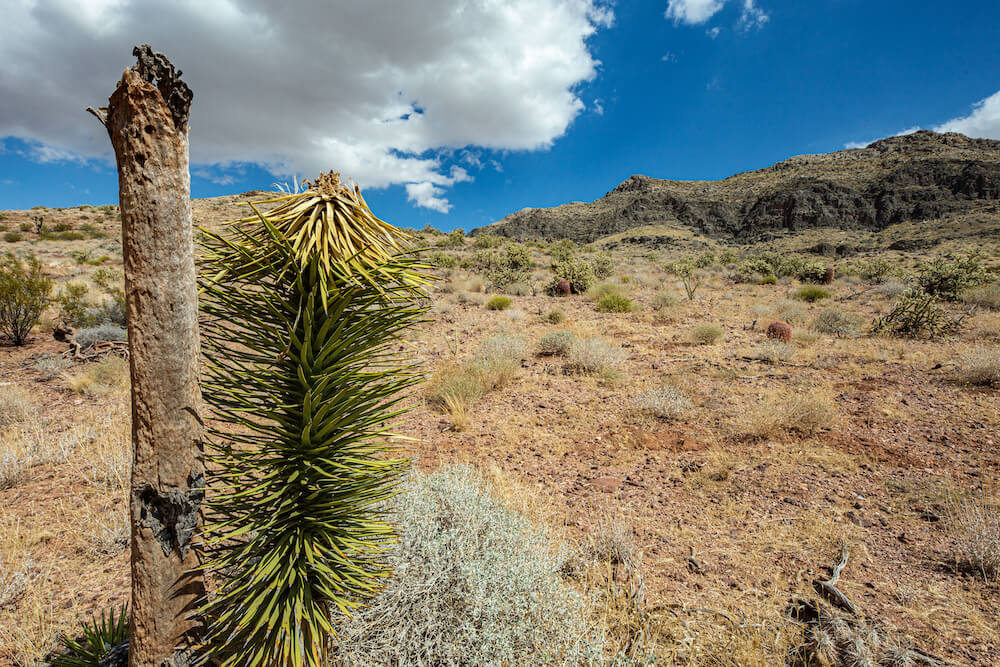
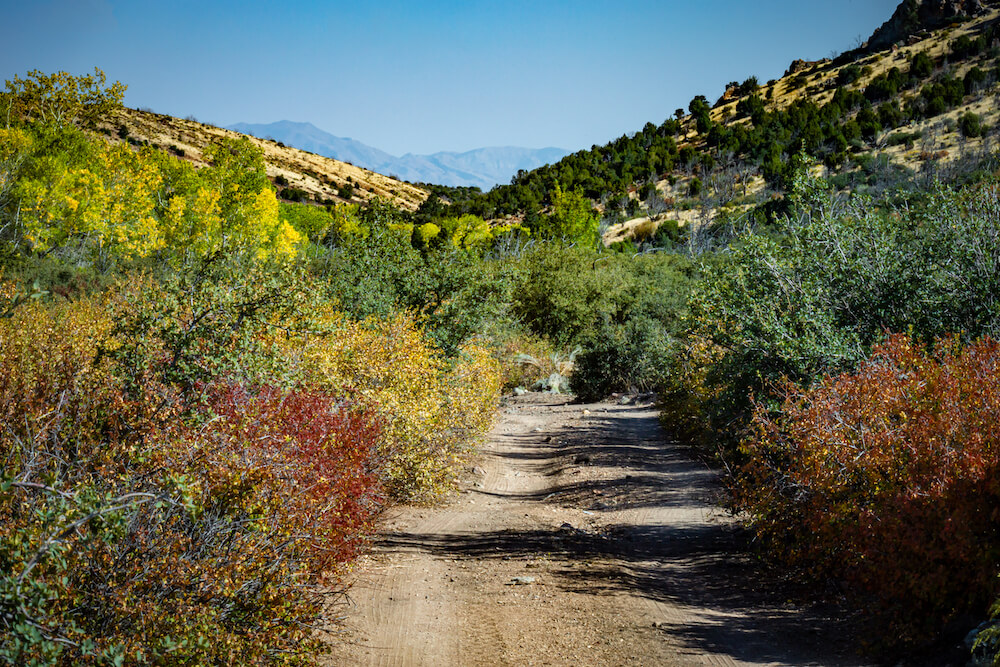


 In India and Nepal, two “development” projects have been proposed that require felling of trees. In Mumbai, over 2600 trees in the Aarey area are to be felled to build a car shed (parking garage) for the Mumbai Metro Rail Corporation (MMRC). Aarey is a lively forest with a thriving natural community (aka ecosystem). Yet, Bombay High Court has failed to acknowledge Aarey as a forest. Meanwhile in Nepal, the ring road (encircling the Kathmandu valley) is set for its second phase of road expansion that is going to cut more than 2000 trees.
In India and Nepal, two “development” projects have been proposed that require felling of trees. In Mumbai, over 2600 trees in the Aarey area are to be felled to build a car shed (parking garage) for the Mumbai Metro Rail Corporation (MMRC). Aarey is a lively forest with a thriving natural community (aka ecosystem). Yet, Bombay High Court has failed to acknowledge Aarey as a forest. Meanwhile in Nepal, the ring road (encircling the Kathmandu valley) is set for its second phase of road expansion that is going to cut more than 2000 trees. In Kathmandu, cutting down trees began during a major festival of the country. Kathmandu, being the capital, is populated with many immigrants from all over the country. During this time, most return to their natal homes to celebrate the biggest festival of the year with their family and relatives. As a result, the valley is relatively sparsely populated. It was during this opportunistic period that felling of trees began.
In Kathmandu, cutting down trees began during a major festival of the country. Kathmandu, being the capital, is populated with many immigrants from all over the country. During this time, most return to their natal homes to celebrate the biggest festival of the year with their family and relatives. As a result, the valley is relatively sparsely populated. It was during this opportunistic period that felling of trees began.

